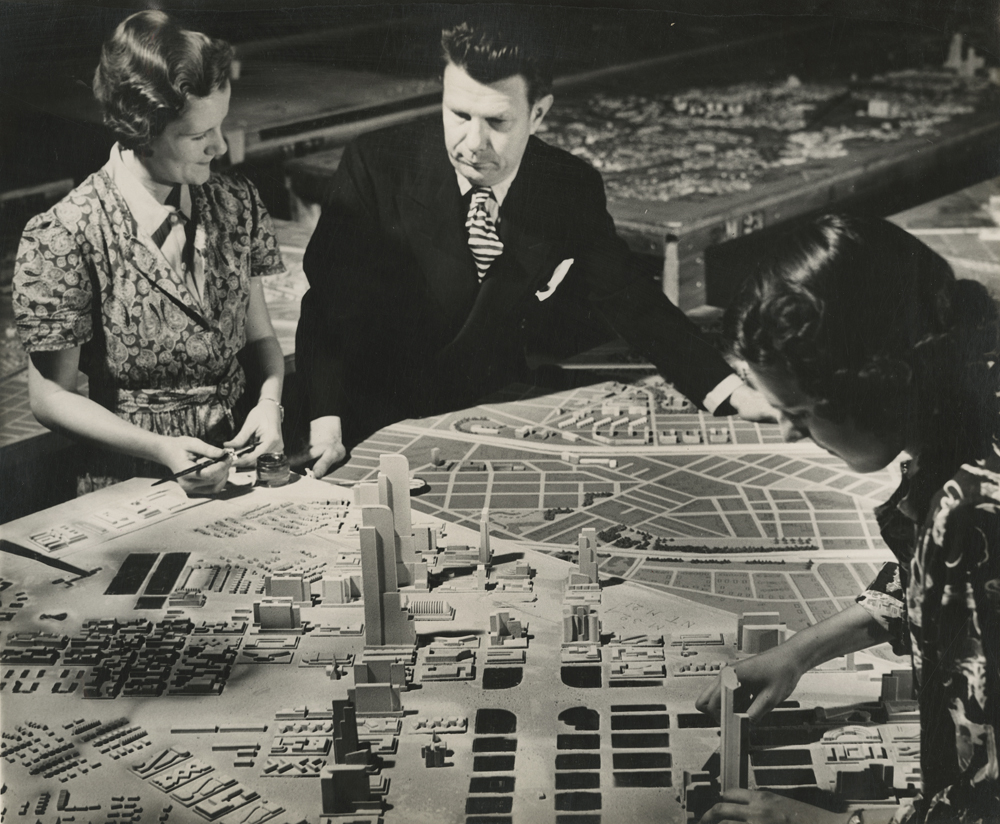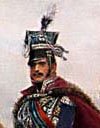This After Action Report is in conjunction with the
Campaign of Nations game that is being played via email and web connections with players from the UK, Canada, USA and Australia taking part.
 |
| Maréchal Ney, Prince of Moscow at the head of III Corps |
Marshal Ney in command of III Corps and I Cavalry Corps tasked himself the job of storming Berlin.
Charles John, Crown Prince of Sweden (formerly French Marshal Bernadotte) commanded Russian Corps of Voronsov, Cossacks under Czernichev and elements of 12 Corps, the 21st Division of Laptiev. With the limited forces available, mostly cavalry, Prince Charles John used the low lands and natural water drainage issues in the south of Berlin region to his advantage. Also the Russians placed a redoubt proximate to the two easiest crossings of the flooded ground so as to support their horsemen in driving off the French attackers.
Ney must have been somewhat confounded on the morning of Aug 19, 1813 (simulated game date) as the day before his cavalry probes had been driven off by artillery fire, they had not reported the ground to be particularly wet, let alone flooded, as it was found to be on the morning of the battle. Ney set about to find the fastest way across this obstacle and directed his engineers to determine the cause. Within hours the two dams had been spotted, one of them was at the north end of a dike system, blocking up the bridge crossing over the stream in the area, which caused a flood of water to wash over the east half of the field. To the west another confluence of little streams to he south of the city wall had also been dammed up, there was a huge pair of earthwork forts that were manned by townsmen from Berlin that would threaten any who attempted to cross the flat flooded ground to the west, this dam also caused the streams in the center of the field to flood over their banks and turn the normally marshy ground into a deep bog.
 |
| The field and defenders positions at start |
The Russians were placed holding the south gatehouse of the old city, with the converged Grenadiers stationed in the battlements and controlling the gates under the direction of GM Harpe. Going to the east (down the photo above) were Cossacks, the redoubt manned by 21st Div under GM Laptiev, then the cavalry of Orurk. Prince Charles John was in a large multistory building near the city walls and Voronsov was acting as the wing commander out in a suburb of the city.
 |
| Russian positions outside Berlin, redoubt in the center |
Ney was to drive III Corps to the bridge crossing near the city south gates, while I Cavalry Corps under Général de division Latour-Maubourg was to race down the dike and press on the Russian Cavalry to keep them back or possibly turn their flank and surround the defenders outside the walls!
These plans and adjustments must have taken some time, for the die roll to start the day came up a "5", meaning it was not until 17h00 that Ney was able to start the battle proper.
 |
| III Corps formed up and marching with Ney in the lead |
Right from the start Oruk's horse were determined to prevent any breakout from the dike road.
 |
| Zagriajski's Uhlans engaged French Lancers at the narrow point of the bridge on the north end of the dike road |
 |
| III Corps in the deployment process at the swollen creek banks before the south gate of Berlin |
While Ney and III Corps surged towards the crossing south of the gates, the Russians near the city seemed stunned and stuck in place.
 |
| Cossacks did not move at the first urging of Czernichev |
Over on the dike, the continued French surging forward threw off the Uhlans and the French pushed clear of the barricades, though blown horses after the fighting made moving forward impossible.
 |
| Gobrecht's lancers drive off the Uhlans and move out across the bridge barricades (my new engineering works) |
Turn 5 was to have only 2 pulses in it, per the
Fast Play Grand Armee rules. This meant a start of a new turn and some new command dice for both sides. Ney having 3d6 and Prince Charles only 2d6 of the "Command Dice" (CD's). This time the die rolls were clearly in Ney's favor, getting 14 of them while Charles only had 6.
 |
| The tabletop battlefiled, III Corps is at the top left, while the cavalry is on the dike road bottom left |
Both bridgeheads were to see furious action over the next few pulses.
In the east, the dike road had been taken by the Russians, while more of I Cavalry Corps pushed forward led by the 3rd Light Cavalry Chasseurs. Over near the south gates of Berlin, the French guns of III Corps and all the Divisions were forming into firing positions.
 |
| Dike bridge slaughter began |
 |
| III Corps and Division artillery began firing |
 |
| Whole field as seen from the western edge |
The turn would see the bridgehead on the dike change hands every pulse.
 |
| Russians were thrown off the dike bridge by the next brigade of Chassuers |
Ney was becoming every more impatient, sending off his field officers to push for crossing the gate bridge before sunset.
 |
| Ney grows impatient at the delay on the south bridge |
Turn 6 was to see 3 pulses, in all the artillery of both sides did not perform well at all. Only 1 hit in at least 2 dozen shots. This permitted the Cossacks to hold up an entire Corps and keep them at bay.
 |
| Even point blank fire was innefective against the Cossacks |
Turn 7 and again the CDs were in Ney's favor, getting 16 to Prince Charles' 8.
Infuriated by the lack of action at the south bridge, Ney moved his headquarters to within 3" of the point of action - with the intent of personally intervening ...
 |
| Ney moved his headquarters into the near front of the battle area. |
|
Over at the dike, the bodies of the dead men and horses were piling up, when a breakthrough by the Chasseurs allowed them to totally overrun the two massed batteries of Orurk, though they were in turn destroyed by Russian Dragoons.
 |
| bodies piled up on the dike road |
 |
| more of 1 Cavalry Corps were pushing on the dike road |
 |
| Balk's Dragoons deliver a killing blow to French Chasseur that had smashed the Horse Artillery of Orurk's Cavalry Division |
Turn 7, pulse 2: tipping point.
Sensing that the Russians could no longer hold back the dike road, nor that the Cossacks could hold off Ney any longer, Prince Charles John Bernadotte gave the order for a covered withdraw to the north for the horse and any guns or foot outside the city walls and into the citadel for the foot troops. Harpe was to open the south gates of the city to allow his horse guns and what Cossacks could to withdraw from the battle zone.
Ney sensed his moment had come! Dashing forward to command companies of Grenadier and Voltigeur at the south bridge in person, Ney was determined to rush the city gates and take Berlin!
 |
| The table at the last moments of battle, two bridgeheads of blood |
Orurk, though given the orders to withdraw, simply refused. (rolled a 12 for CD) He then ordered the remaining Hussars to charge headlong into the 1st Light Cavalry Division Chasseurs!
 |
| The last charge of Orurk |
Over at the south bridge, Ney had pushed through the fleeing horse batteries of his own command, scattered the Cossacks that had put the batteries to flight, then with a company of Grenadiers and some Voltigeurs to clear a path Ney himself led the way to the now open south gates of Berlin.
In the failing light, Ney was last seen over-run by a swarm of Cossacks that were covering the retreat of their fellows and the access into Berlin of a Russian Horse Battery.
Later, that night in Berlin's Citadel, Prince Charles John was hearing from an angry Generallieutenant Count Voronsov about the lackluster performance of the Cossacks and how Orurk had chosen to throw himself and his horse one last time at the French rather than withdraw as ordered. The interruption came as Cossack Corps commander Generalmajor Czernichev burst into the hall leading a blood soaked horse with the saddle of a Marshal on it, in his hand was Marshal Ney's hat. Beaming with a smile from ear to ear, he announced, "We have killed Marshal Ney this day!"
While the Citadel could easily hold and support the Russian foot troops and artillery, the question of what to do about the horse and Cossacks remains ...
 |
| I Cavalry Corps survivors, 3rd Light Cavalry Division was mauled |
 |
| III Corps, virtually intact - only Ney is missing in action |
 |
| Russian survivors that have fled to the Citadel in Berlin |
Note to players and readers, the battle was run on Sunday 20 April, I have had some internet connection issues this past week that prevented me from posting before now.


















































.jpg)

























.jpg)






















